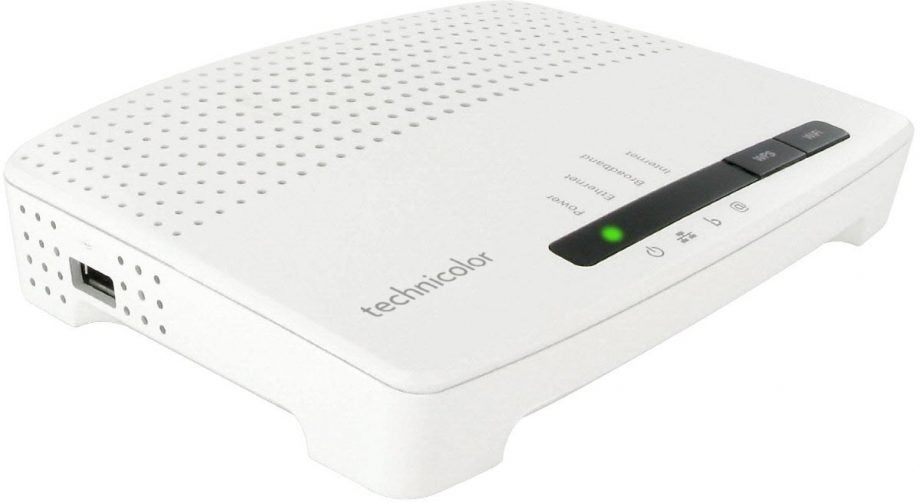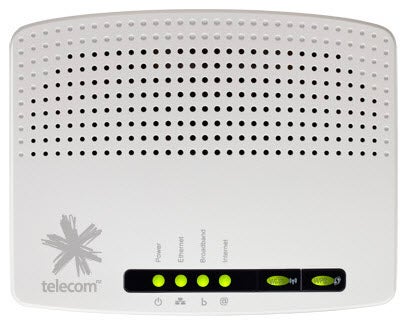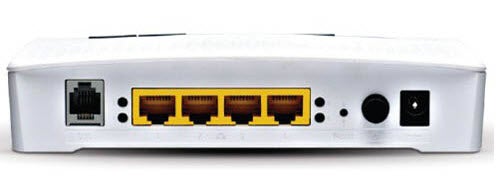PlusNet Fibre router Review
PlusNet Fibre router
Can a single band router really serve a fibre optic broadband connection?

Sections
- Page 1 PlusNet Fibre router Review
- Page 2 Setup, Performance & Verdict Review
Verdict
Pros
- Cheap
- Straightforward setup
- Admin password unique to each router
Cons
- Barely achieves advertised fibre speeds
- Just 3x 10/100 usable Ethernet ports
- Ugly design
- Basic router settings
- No USB ports to network drives or printers
Key Specifications
- Review Price: £39.99
- 802.11n 2.4GHz wireless
- 3x (usable) 10/100 Ethernet ports
- WPA / WPA2 & WPS security
- Integrated DSL modem
What is the PlusNet Fibre router?
This is the router PlusNet supplies with its fibre optic broadband service which provides customers with speeds of up to 76 megabit (Mbps). The model is in fact a Technicolour TG582n which is also supplied by Zen Internet (along with other more expensive options) and Be Unlimited (which is folding into Sky). The products should be identical, but our sample came from PlusNet and features the company’s logo in the router’s settings hence the main review title.
Interestingly, like the controversial Sky Hub, the TG582n is a single band 802.11n 2.4GHz router. This slower wireless standard often struggles to distribute WiFi fast enough to reach fibre broadband speeds, so it has our Spidey-sense tingling.

PlusNet Fiber router – Design
Without a doubt, the TG582n is the most aged looking router we have seen in recent years. Its beige finish, prominent vents and array of flashing green lights will delight hipsters and terrify techophiles in equal measure.
On the upside, the matt white finish doesn’t collect fingerprints or dust easily and its boxy design is rugged. The TG582n is also wall mountable, though the wall mount points come at the expense of rubber feet at the front of the router so we wouldn’t advise sitting it on any particularly delicate surfaces should it get knocked.
PlusNet Fiber router – Features
Looking at the TG582n may be like stepping back in time, but the greater concern is it evokes a similar feeling when looking at the spec sheet. For starters the TG582n is merely a single band 802.11b/g/n 2.4GHz router and it features just a 2×2 antenna array when dual band 3×3 arrays have been standard for some time.
In addition to passing up 5GHz WiFi, the TG582n also skips Gigabit Ethernet and just three of its four 10/100 ports can be used. This is because one has been commandeered as a WAN port (signified by red tape stuck below it) to accept Internet from PlusNet’s dedicated fibre broadband modem. As such anyone looking to run a fast local network from the TG582n – like the four port 10/100 Ethernet of the Sky Hub – would be well advised to steer clear.

The fact the TG582n also features a DSL port beside its Ethernet ports in theory adds flexibility, but in reality it simply highlights that this is a router designed for ADSL2 (up to 16Mbit) services and has been customised in an attempt to squeeze more mileage from the clock.
The better news is the TG582n does pack up to date security with WPA2 and WPS aboard and a firmware update means it is IPV6 ready. The router also provides dynamic DNS and some basic parental control which allows parents to block specific websites. That said this is an outdated method (you’ll be typing in websites until the end of time) and you’d be better off using smarter free dedicated software such as Norton Family, Microsoft Live Family Safety, KuruPira WebFilter and Qustodio, to name but a few.
Lastly the TG582n has a USB 2.0 port for sharing a printer or external storage across your local network. Strangely it is located on the side of the router, rather than the back, which is the first time we’ve seen this. USB should be a default on any modern router and it was also included on the Virgin Super Hub and BT Home Hub 4 (both of which are also dual band) but surprisingly omitted from the Sky Hub.

